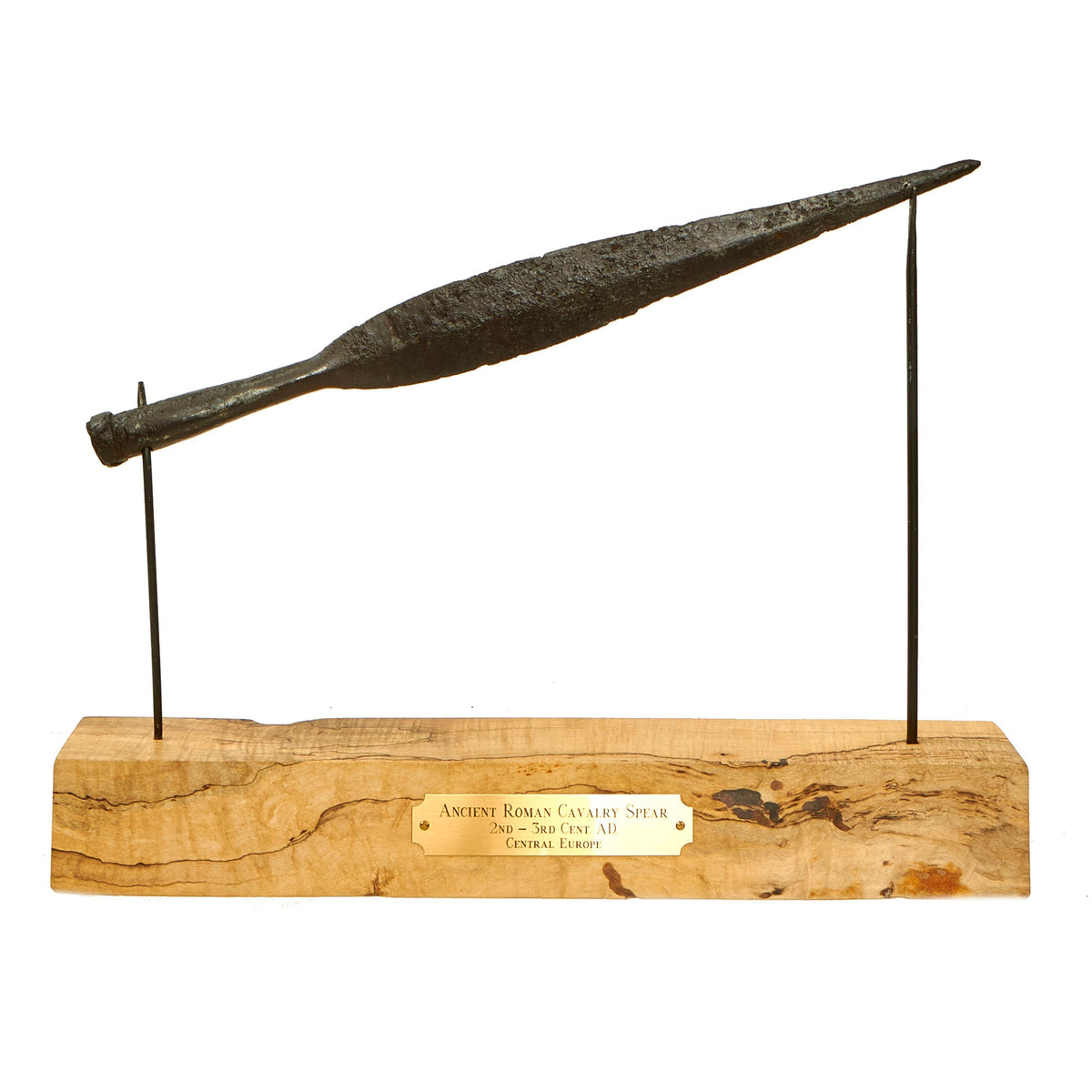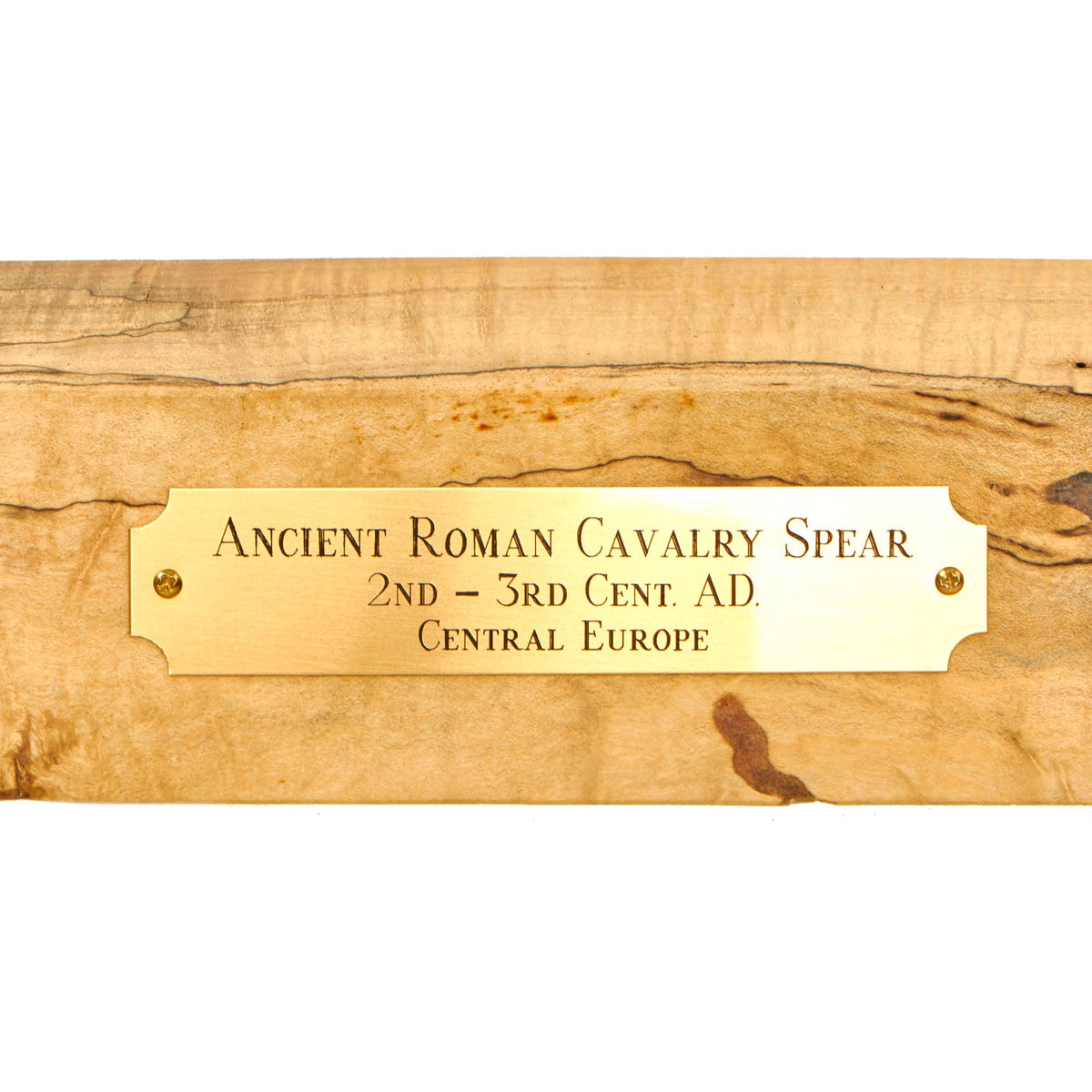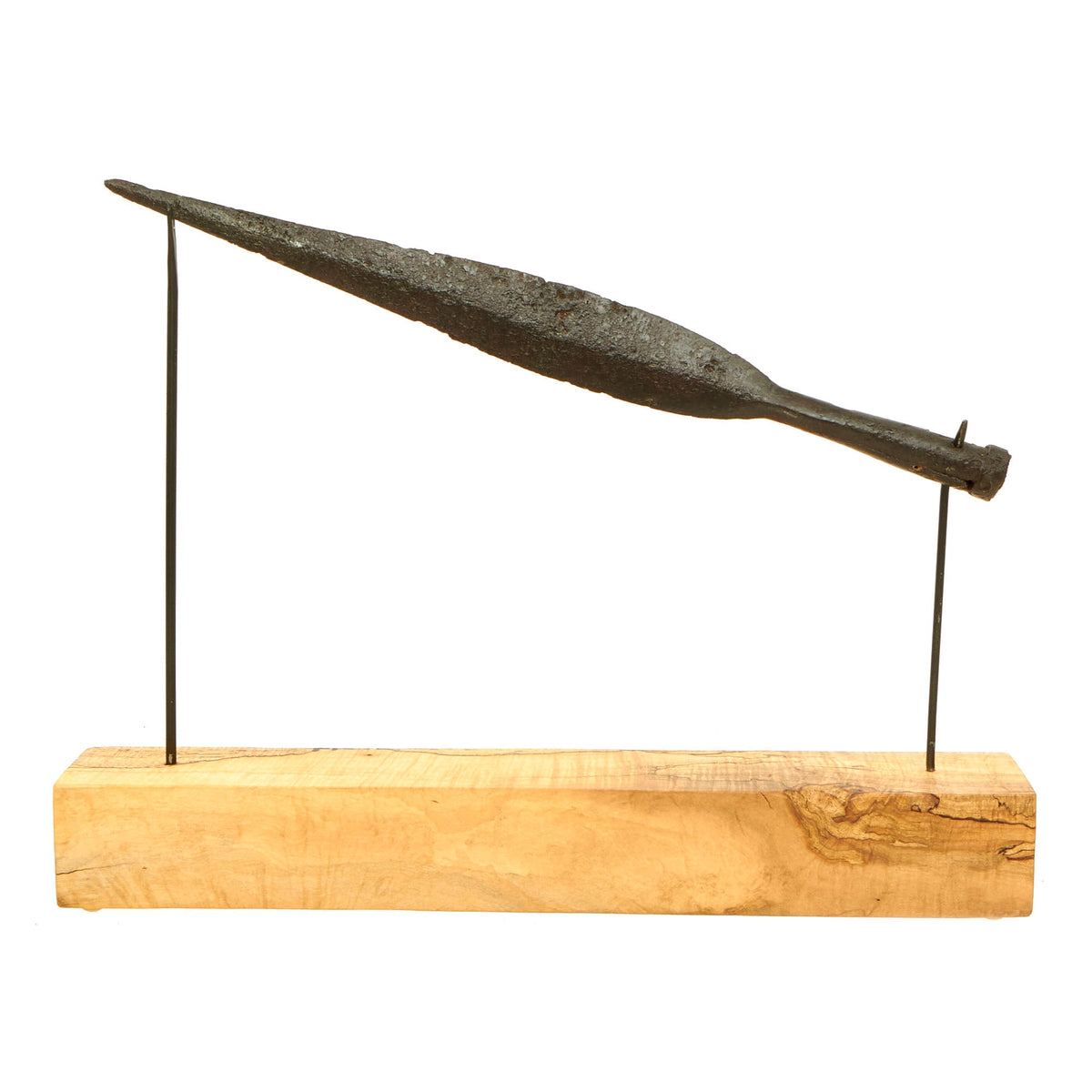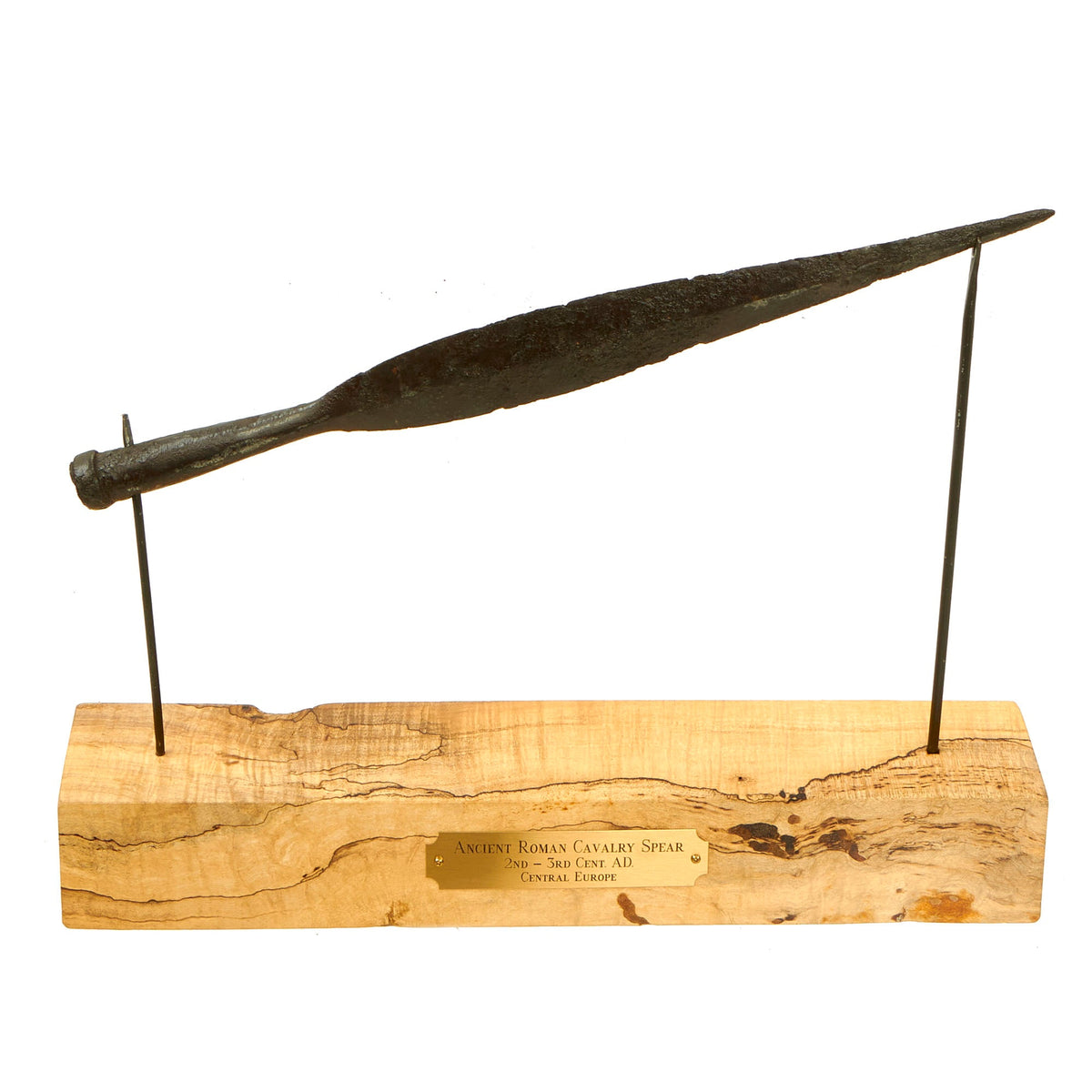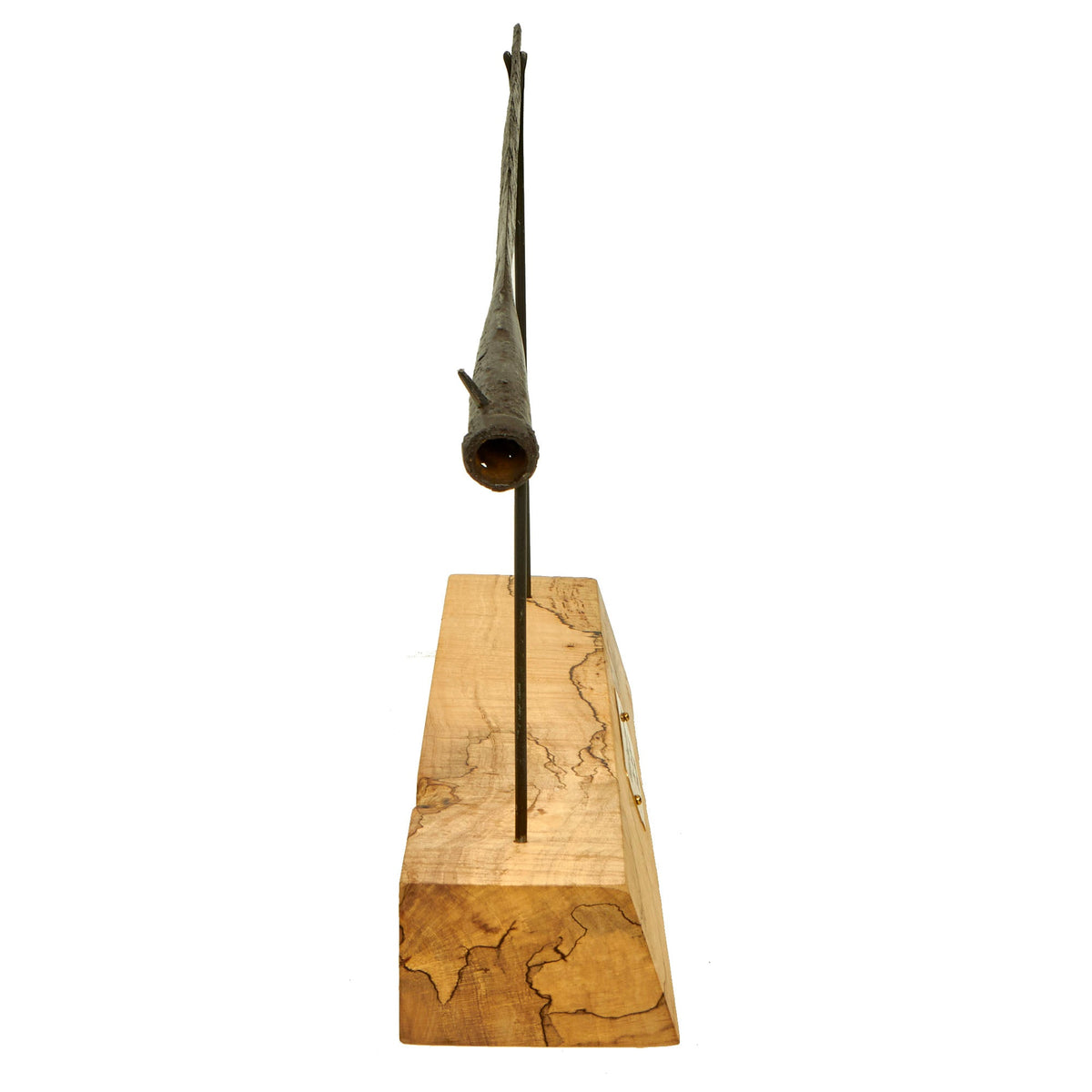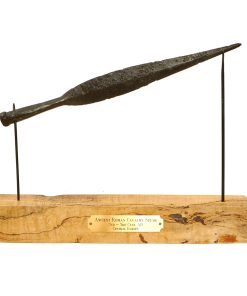Original 2nd – 3rd Century AD Ancient Celtic “La Tene” Socketed Spearhead / Roman Light Cavalry Spearhead on Display Base – Recovered in Central Europe Original Items
$ 1.495,00 $ 373,75
Original Item: Only One Available. Now this is a very interesting spearhead, dating back to the 2nd – 3rd Century. The spearhead is either Celt or Roman due to the design. The Ancient Celts were heavily influenced by the Romans and many tribes made weapons modeled after their enemy. The leaf shaped spear is one of the most common weapons seen in the arsenal of the fighting man in many periods of history, making identification quite challenging.
Following military experience gained after initial contact with the Roman armies from the 1st century AD, the Celts changed the design of their spearheads so that they possessed a narrower profile, much like this example here. This was a reaction to the Roman use of protective body armor and the need to find a spear that could effectively puncture their plates.
On the other side of the spectrum, this could very well be a Roman Lancea. The Lancea was a javelin used in ancient Rome. According to the OED, the word originally came from the Celtiberian language, also cf. λόγχη (lonche), the Greek term for lance. One kind of lancea, possibly known as the lancea pugnatoria or “the fighting lance” was used as a thrusting weapon by cavalrymen. This weapon was used by cavalrymen as it was lighter and easier to use than the pilum. The lancea was also used by auxiliaries. legionaries would use the lancea if the occasion called for it. Arrian equipped his army with the weapon during a battle with the Alans. Soldiers that used it were known as lancearii. It is unclear how the lancea was distinguished from the hastae. Many lancea had amenta (leather straps), although not all. This kind of javelin also had short wooden shafts and small leaf-shaped metal heads also like this example. Sometimes the heads had elongated points which may have been used to increase the penetration of the spear.
This example measures 15” in total length with a 4” socket. The spearhead is mounted (though removable) on a lovely wooden base. The base has a brass plate that reads as:
ANCIENT ROMAN CAVALRY SPEAR
2ND – 3RD CENT. AD.
CENTRAL EUROPE
A beautiful example that comes more than ready for further research and display.
Fast Shipping with Professional Packaging
Thanks to our longstanding association with UPS FedEx DHL, and other major international carriers, we are able to provide a range of shipping options. Our warehouse staff is expertly trained and will wrap your products according to our exact and precise specifications. Prior to shipping, your goods will be thoroughly examined and securely secured. We ship to thousands clients each day across multiple countries. This shows how we're dedicated to be the largest retailer on the internet. Warehouses and distribution centres can be located throughout Europe as well as the USA.
Note: Orders with more than one item will be assigned a processing date depending on the item.
Before shipping before shipping, we'll conduct a thorough inspection of the items you have ordered. Today, the majority of orders will be delivered within 48 hours. The delivery time will be between 3-7 days.
Returns
The stock is dynamic and we cannot completely manage it because multiple stakeholders are involved, including our factory and warehouse. So the actual stock may alter at any time. It's possible that you may not receive your order once the order has been made.
Our policy is valid for a period of 30 days. If you don't receive the product within 30 days, we are not able to issue a refund or an exchange.
You can only return an item if it is unused and in the same state as the day you received it. You must have the item in its original packaging.
Related products
Uncategorized
Uncategorized
Uncategorized
Uncategorized
Uncategorized
Uncategorized
Uncategorized
Band of Brothers ORIGINAL GERMAN WWII Le. F.H. 18 10.5cm ARTILLERY PIECE Original Items
Uncategorized
Uncategorized
Armoured Fighting Vehicles of the World: AFVs of World War One (Hardcover Book) New Made Items
Uncategorized
Uncategorized
Uncategorized
Uncategorized
Uncategorized
Uncategorized
Armored Burgonet Helmet & Polearm from Scottish Castle Leith Hall Circa 1700 Original Items
Uncategorized
Uncategorized
Uncategorized
